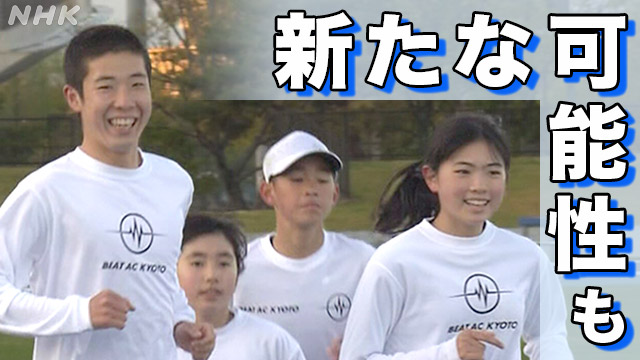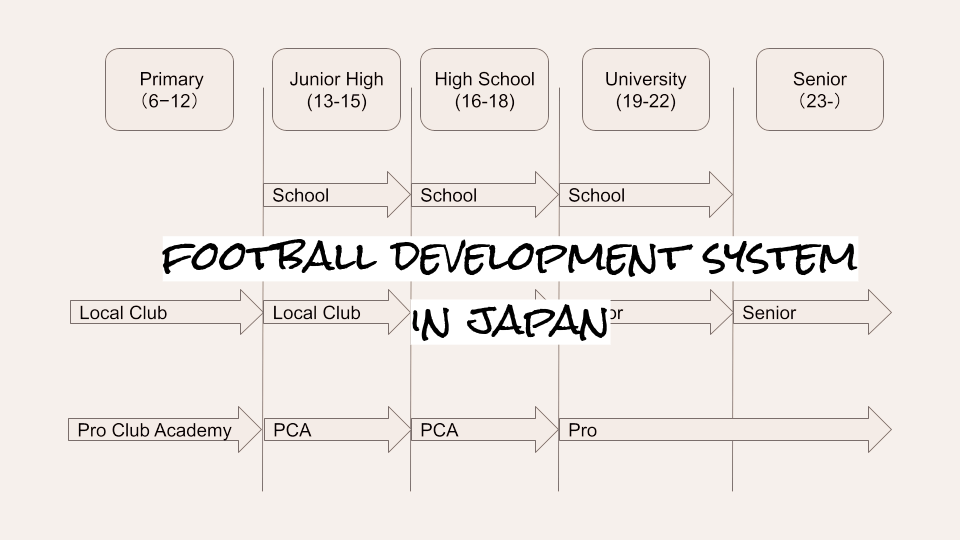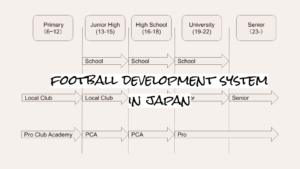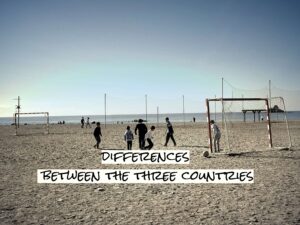Japanese football’s development age system is unique in the world
It has been almost four years since I started playing football overseas. It has been a tricky few years, with Corona and others, but I have played football in New Zealand, Australia, Spain and travelled around Europe to see football in many different countries.
I got the impression that Japanese football is very unique in the world.
In particular, the club activity system in Japan is rare in the world, and the standard seems to be very high.
In fact, when I answer that I “played at high school or university” abroad, I get responses that don’t seem to fit very well.
So this time I would like to write about the Japanese football system for the upbringing age group, which I felt was not the norm because I went abroad. I would like to look back as objectively as possible on Japanese football and my own life in football, which I have only become aware of because I played abroad.
This article is my first attempt to introduce Japanese football to people in New Zealand and other countries I have met through football. I would have to write this volume in English before the end of the year, so deepl has helped me with everything. I used translations for all of them, so the sentences may be a bit strange, but they are definitely better than my English! Thanks Deepl!
But I also think that Japanese people can realise that the structure of the development age they have experienced is not the norm. I think it would also be a good opportunity to look back at your own life in football objectively, so I hope you will call on me. If it is too long to read, I think you will enjoy it even if you skip to the discussion part.
Primary school age

In the primary schools age group, the basic idea is to play in a youth team near home. This is the age when enjoyment is the main consideration, rather than choosing a team to become a professional.
Basically, many children start playing football in the primary school age.
Most people play in a youth or sports club near their home. Boys’ teams are clubs tied to a school or the surrounding area, and some teams are coached by alumni or other volunteers. Some clubs have contract coaches, but to be honest it is difficult to make a living doing just that, and many coaches have a second job or work on the side.
Practice is about 1-2 times a week. If there is a tournament at the weekend, they usually play matches. Practice takes place on a dirt field, such as a primary school.
If this is not enough for a football boy, he plays football with his friends after school, which is the traditional Japanese way of life for a football boy.
A wide range of school activities

Practising 1-2 times a week is not enough to get better and I want to learn more football to become a professional.
For such children, there is a culture of football schools in Japan. Most are held in groups of around 10 (depending on the size of the group) on futsal courts or similar.
Unlike youth groups, football schools here are established as a business. Therefore, it is important to remember the background that the number of children needs to be large to make the business viable, and in many cases the costs are not cheap.
And interestingly, there are a great many technique-based schools that specialise in dribbling and footwork. In order to get better at football, only one part of football is cut out and specialised in that part. I think it is a characteristic of the Japanese football school culture that there are many football schools with such a focus.
Also, the 1-on-1 private lesson format often seen in New Zealand and Australia is not common in Japan.
Professional academy
An increasing number of professional J-League clubs nowadays have teams for primary schools age children.
To enter a small elite academy, you have to go through a selection process, for example, and this is a narrow gate.
However, the environment is well prepared, with a rich team of coaches and staff and artificial turf for training. As a matter of course, it is the quickest option to become a professional.
U-12 national championships
A national tournament for the developmental age is always a matter of discussion in every country.
In Japan, the national tournament is held at the age of the final year of primary school. Although it is in primary schools, the finals are broadcast on television, giving the impression of a rather spectacular tournament. Only a very small number of teams are able to aim for the national tournament, but it is still a highly motivating tournament for children who want to become professionals, as it is also a chance to be scouted by clubs in the junior high school age group.
Incidentally, apart from the debate on whether there should or should not be a national tournament, Keisuke Honda, who noticed that there is only a national tournament for U-12s, has recently organised a national tournament for U-10s. I personally think it is an interesting initiative, as the rules have been changed in an original way.

Junior high school age

In the junior high school age group, there are three main patterns: junior high school club activities, city club teams and J-League lower divisions.
Although it is difficult to see in the diagram, it is possible to go from a youth team to a J-League team, or conversely from a J-League team to a city club or junior high school club.
Of course, many players aim to join a lower J club, but again this is a very narrow gate. However, the environment is excellent.
Club teams rather than club activities
The two options for players who could not join a lower J team are junior high school club activities or a team in a city club.
Without choosing the right words, in our age group, the club teams were of a higher level than the junior high school club activities. Of course, some of the junior high school clubs were very strong, but it was also difficult to get 11 good players in the city junior high school system where, except in public schools, they had to go close to home.
On the other hand, city club teams basically select their players through a selection process.
It is therefore easier to guarantee the quality of the players and the coaches are often of high quality. For these reasons, people who are more serious and want to do better tend to choose city club teams.
However, the quality of coaching and the environment is more expensive. I think now that only families who could afford to send their children to a club team were able to choose a city club team.
Some of them take six years to develop in middle and high school.

Some private junior high schools, such as Aomori Yamada Junior and Senior High School, offer integrated junior and senior high school training.
Not only private schools, but also club teams and high schools cooperate with each other for training, such as FC LAVIDA (Saitama) and Shohei High School. Basically, the clubs are able to spend six years carefully nurturing the players, whereas in junior high school they would basically spend three years in junior high school and then move on to a different team in high school.
The advantage is that they can play football in line with the club’s philosophy and identity.
The impression is that the severity of the situation increases dramatically in the middle school age group.
There is an impression that the severity of the game changes at once when it changes from the primary school age to the junior high school age. Football, which used to be all about fun, begins to enter the world of competition, and the number of teams that are serious about winning and losing increases overwhelmingly. Some teams, of course, place more emphasis on technique and development than on winning and losing, even at this age.
The amount of training also increases to 4-5 days a week and the workload increases all at once.
On a personal level, the club team I was on was quite strict, sometimes they wouldn’t let us wear spikes and we had to finish practice just running in running shoes, and in the summer we had long practices from 9am to 5pm every day.
I think it is a characteristic of this age group that they start to impose not only technical and physical training but also mental training.
Currently, secondary schools are being converted into town clubs.

School club activities in all sports, not just football, are being moved to the community. A major reason is the working hours of teachers. It seems that junior high school teachers are working a lot of hours, as they are almost like volunteers and have to spend time on club activities even on weekends.
In addition, the members of junior high school club activities are often determined by luck, so I don’t think it is suitable for team sports such as football. Personally, I hope that an environment can be created for children where they can play football under a solid coach at a local town club.

High school age

In the high school years, approximately all students will play football in their high school clubs. The number of city club teams, which were plentiful up to junior high school, is drastically reduced in the high school years. My sense is that the ratio is 90% high school clubs and 10% J clubs and city clubs.
There are two types of high schools.
There are two types of high school club activities: municipal and private.
Municipal is just a group of members who have passed the examinations by studying. In public schools, it is possible to gather players through a special student system. Private high schools are also characterised by their well-funded schools, artificial turf grounds and dormitory facilities.
Club team or club activities?
In recent years, some high school clubs have emerged that are not only as good as J clubs, but even better than them. When Kusei Matsuki was captain of Aomori Yamada High School, the team won the Premier League, which is played on the same stage as the club youth teams, and became the genuine No.1 high school team.
For a while, there was a theory circulating in the Japanese national team that Keisuke Honda and Nagatomo were from high school clubs, and that “it is likely to survive in the professional ranks because high school clubs are mentally stronger.”
In fact, it seems that sometimes players who could have joined a lower J team choose to play in a high school club. So it seems that it is not necessarily the position that the lower J clubs are better.
Why are high school clubs more mentally powerful?
Leaving aside the debate here about whether high school clubs are actually mentally stronger, I think it is possible to say that high school clubs are more demanding than club teams.
Because football is played as a school club activity, the educational aspect is strongly reflected in it. I also have to tell you that Japanese education is very unique compared to the rest of the world. There is no science or logic, but the idea that one can be trained mentally by enduring hard training.
Specifically, eccentric hairstyles and clothes are forbidden by the school, as well as tattoos and black hair only.
Even stricter than school rules are club activities, where joint responsibility, penalties and running are present. Hierarchical relationships are also often strict.
In my experience, there were many unreasonable things that cannot be understood by logic, such as shaving all the members by joint responsibility, running in which the running does not lead to strengthening running ability far beyond fatigue, training without water supply even in mid-summer, no time off, etc.
Perhaps it is a uniquely Japanese way of thinking that ‘if you overcome hard things, you will become stronger’.
Dream High School Football Championships
Many high school students choose to play high school football, dreaming of this stage. The national football championships in winter attract more TV broadcasts and more attention from the public.
The finals and high-profile cards can attract tens of thousands of spectators, and the attention is as great as that of the professionals.
This level of attention is quite impressive for a high school student.
University age

As a university student, it is common for students to graduate from high school and go professional OR go on to university. Of course, for those who do not go on to university, there are also adult football teams. However, if you are aiming to become a professional player, it is not often the case that you play for an adult team without going on to university.
The level of university football in Japan is quite high.
What surprised me when I went abroad was that there was no system of playing football at university in any country. As far as I know, only in the USA are university club activities well known.
On the other hand, in Japan, playing football at university is mainstream. In fact, I think the level is very high.
In recent years, around 100 players have progressed from university to a professional career every year, which is understandable. In addition, many players such as Kaoru Mitoma, Hidemasa Morita and Ayase Ueda, who are members of Japan’s national team, played at university before going on to play professionally.
One of the most famous stories is that of Mitoma, who “could have gone professional after his youth career, but chose to go professional after developing his physical skills at university”. In the future, there may be more cases of players developing their skills at university before going professional.
University football has a good environment.
Many universities have artificial turf fields, and many universities offer training on artificial turf for matches as well as practice.
At the top level, matches are played on beautiful natural grass, and coaches, physical coaches and other staff are available.
If anything, they tend not to have very strong media exposure or social networking, and are not very well recognised by the general public. Looking at the level of recognition of university sports in the US, I feel like this area is a bit lonely for Japanese university football.
The experience of management is one of the best parts of university football.
At the stage when university students are about to enter the workforce, most university football clubs are mainly run by students.
When I think about it now, whether I go on to become a professional or continue playing football as an amateur, the experience of running a club seems to have been significant. I think it is important not only to play as a player, but also to understand how the club is structured in order to increase your value as a footballer.
In recent years, more and more universities are acquiring sponsors to finance their activities.
There is a movement to raise further funds by getting sponsors to cooperate with clubs to cover operating costs, which used to be made up of club fees from club members and subsidies from alumni and universities. I call this the privatisation of club activities on its own, and I think it is a good move as it will considerably broaden the scope of activities compared to the previous tax revenue system.
Adult age

As mentioned earlier, many athletes progress from university to a professional career. The majority, however, do not go on to a professional career. There are two options for such people. Working football OR retirement. It is at this juncture that the greatest number of people part ways with football.
On the level of adult football in Japan

In Japan, J1, J2, J3 and up to the third division are professional leagues, while the rest are amateur leagues.
However, the JFL, which corresponds to the fourth division, is not professional but is a national league and the level is very high. It is characterised by the fact that some clubs aim to become professionals, while others do not aim to become professionals but play as a signboard for their companies.
Below that are the regional leagues, and below that are the prefectural leagues.
The JFL and regional leagues are of a high standard, but many players play while working full time. In this respect, it is similar to working people’s football in New Zealand. Practice is also 3-5 days a week, and many teams have as many practice hours as possible to balance work and training, even if they don’t have the same amount of time as professionals.
There are many interesting clubs in regional and prefectural leagues.
There are also teams in regional and other leagues that play in leagues that are far from professional at the moment, but aim to become professional in the future. Many of these clubs have unique initiatives and I have the strong impression that they value their philosophy and identity as a club. There are many new initiatives, such as the involvement of companies in the management at an early stage and the use of NFT.
In recent years, there has been an increase in the number of players interested in creating such clubs who switch from professional to regional leagues. One of the attractions of working people’s football is that you can do things you couldn’t do as a professional player at your own discretion at an amateur club.
Basically, Japanese working people pay to play football.
One difference between international and Japanese adult football is that in Japan you have to pay to continue playing football.
Of course, in the JFL and regional leagues, which are closer to professional football, you can play without paying money, or rather you can sign a contract and receive a salary while playing.
However, in the lower teams, the players basically have to pay each other to cover the running costs. In New Zealand and Australia, you don’t have to pay to play for a lower team, so you can continue to play football with less financial burden. I think this is the reason why people can continue to play football even after they enter the workforce, even though the level of competition is not as high in New Zealand.
Structure and problems from the Japanese and New Zealand development systems.
From here, I would like to write about what I think objectively about football in the upbringing age group in Japan, having played both in Japan and abroad. I have also seen football in Spain, but to be honest I think it is still too shallow to write about football in Europe, and it is more interesting to compare it with New Zealand, which is also an island nation, so I would like to think mostly from a Japan-New Zealand comparison.
Number of coaches experienced throughout their career

If you look at the Japanese development system, the timing to change teams comes at the same time as school breaks.
Conversely, that is the only time when you can change teams. This means that a small number of people will end up playing football in their development years with only four teams in their lives.
We will not discuss whether this is more or less here for once.
Primary school children: up to six years
Junior high school students: three years
High school students: three years
University students: four years
However, the fact that the teams remain the same means that the coaches also remain basically the same.
Personally, I am interested in whether there is any correlation between the number of coaches and a person’s career as a player.
This is because, when thinking about a player’s development, it is very important what kind of coach teaches them football. There are probably many footballers who say they owe their success to a coach who taught them how to play football.
You can meet a lot of coaches to increase your chances of finding the right one.
Or,
Growing as a player by being taught by a few coaches over a long period of time.
I don’t know which is the right answer, but I would like to look back on my football life.
In my case, I never once changed teams in the middle of my career, so I have played for four teams by the time I entered the workforce. If I count the number of coaches I have taught in that football life, it is as follows
Primary school students: 3-5
Junior high school students: 6-10
High school students: 3
University students: 4
Total: 15-22
I experienced coaching from about ten different coaches in three years, because the club at junior high school had a bit of a special situation and there was a lot of turnover in coaching staff. There were no set coaches for each grade, and I remember being nervous and wondering who the coach would be today, as we all talked together on the way to practice.
For having only played football with four teams in Japan, I think I have met around 20 coaches and have met a lot of coaches.
It’s just my personal opinion, but I’m glad I’ve been able to learn from so many coaches. There are two reasons.
Watching and learning is the best way to grow.
When I look back on my football career, the times when I felt like I was getting better were usually when I was able to watch, learn from and steal the play of someone who was good. And for me, that was often my coach.
I loved the moment when coaches would sometimes join us and play football, and I would always try to steal something from them. And different coaches have different styles of play and different good plays.
I’m glad that I met a lot of coaches because I got to see a lot more good plays.
Exposure to more ideas
Different coaches have different ideas of football. Especially in the teams I have experienced, football as a club was not strongly established to be honest, so I think the way of thinking about football often differed from coach to coach.
I don’t think it’s fair to say that the evaluation of a player changes depending on his or her coach, but I think my football career has been brought up under at least a sparse evaluation system.
However, I had to be evaluated by the coach at the time to be able to play the game, so I tried to understand his way of thinking. As a result, I finished my development years without having established ‘my football’ as a player, but I think I became a player who can adapt to any footballing philosophy.
I personally think that the reason I am able to adapt and play without rejection is because I have been taught by a lot of coaches.
Of course, in my football career, there were coaches who I felt that their view of football matched mine, even if I wouldn’t say they were my mentors.
If they had spent more time coaching me, I might have become a better player. I don’t know which is the right answer, but in my opinion there are many advantages to being coached by many coaches.
High transfer hurdles.

As mentioned earlier, football in Japan is tied to school boundaries.
I played for four teams in elementary, junior high, high school and university. I never had to move to another team in the middle of my career.
So I have the impression that it is not so easy to transfer in the development age in Japan.
In other words, the hurdles to transfer are very high.
For example, let’s say you joined a high school club but the football and environment did not suit you. There are two options for such a person. They can either transfer the entire high school or join a city club. Needless to say, it is not easy to change the whole high school for football.
On the other hand, what about city clubs, which are certainly easier to join as long as you are good enough. However, at the high school age, town clubs are not well established and are probably an option that is only viable in Tokyo.
If this happens, you will have to continue playing football at that school even if you don’t want to. I think this is one of the reasons for the phenomenon of “he went to 00 and got crushed”.
The same thing happens at university and junior high school, so to be honest, football at school age in Japan is not easy to transfer.
Against this background, it is very important to choose a career path at the end of each school year (primary schools ➔ junior high school, junior high school ➔ high school), and there is a lot of pressure not to change teams for three years once you have made your choice.
This high hurdle for transferring at the student age in Japan is a major disadvantage and it is unfortunate that the negative impression of “transfer = drop out” is attached to it.
On the other hand, in New Zealand and other countries, even in the student age group, the basic rule is to play football in a city club team, not in a school. Strictly speaking, you play both at school and in clubs.
The teams are not divided into elementary, junior high and high school age groups, but into U-12, U-14 and so on.
Teams are selected every year, so it is very easy to transfer.
In contrast to Japan, New Zealand football is structured in such a way that if you don’t fit in, you can move to another team, which I think is good for the development years.
Ages to play with.

In Japan, there is no such thing as skipping a grade unless you are really good at it. This is because it is not possible to cross the grade dividing line unless you go to an integrated junior or senior high school. Therefore, the age groups that play together in the student age group are 2-3 years above and below the school age group.
In New Zealand, on the other hand, players in the 15-18 age group, which is the high school age group, sometimes play with our senior team, and because of the U-20 under-20 rule, young, talented players are increasingly joining the top teams. Some of the veteran players in our team are over 30 years old, so from a high school student’s point of view, they are playing alongside players 10 or more years older than them. I think this is unthinkable in the student age group in Japan.
I don’t know how this affects the players’ football, but I feel there are differences between Japan and New Zealand in the following areas.
Japanese people with strong peer group ties.
Three years of junior high school, three years of high school and four years of university. In any case, football in the student age group in Japan, where people spend several years together.
The bonds that are fostered there are strong, and it is impressive that many people continue to maintain close relationships after graduation and into adulthood. This bond tends to be particularly strong with friends who have gone through the tough high school years together.
I don’t know if this bond is necessary to be good at football at all, but at least it is important to be able to stay friends for a long time in life.
It’s not that people in New Zealand and other countries don’t have that kind of friendship between people of the same age group. They have friends of the same age group and they are very close. However, I have the impression that in Japan, the bonds between people of the same age are stronger.
Sociability
Playing alongside adults in their high school years is a very positive thing from a humanistic point of view.
Japanese students who had previously only been involved with people their own age suddenly find themselves working with adults one or two generations older than them. I think many of them may not be able to communicate well with them across generations here.
On the other hand, in New Zealand there is no culture of honorifics and no hierarchical relationships.
The relationships are flat. They grow up watching adults in such a situation, so they look somewhat mature and there is not much awkwardness in their communication with adults.
I personally think that it is better to have the experience of transcending generations through football as much as possible. This is especially true in Japanese student football, which places great importance on human education.
Conclusion.

These are the results of my own life in football, looking at Japanese development age football objectively and comparing it with football in other countries.
There are still many essential elements to consider when thinking about development in Japan, such as the ‘selection system’ and the ‘generation-based representatives’ that I have never experienced. There are many things I have yet to see, though,
I can see Japan from a broader perspective now that I have experienced overseas than when I was playing in Japan.
There is no doubt about this.
I realise that my football environment, which I took for granted, is not so by knowing other things.
By learning about other options, you may or may not be able to do better.
It is not easy to know what is the right answer and how to become better, and the absolute environment of the country can have an influence on this.
I am very interested in going abroad and being inspired by the approach and culture of football in other countries.
There are a lot of things I don’t understand, but I hope to continue to formulate my own hypothesis about the relationship between football, culture and education, etc.
Anyway, I will do my best to survive in New Zealand.








コメント
コメント一覧 (1件)
[…] あわせて読みたい Looking back objectively on ‘Football in Japan’s Development System’ after expe… Japanese football's development age system is unique in the world It has been almost four years since I started playin […]